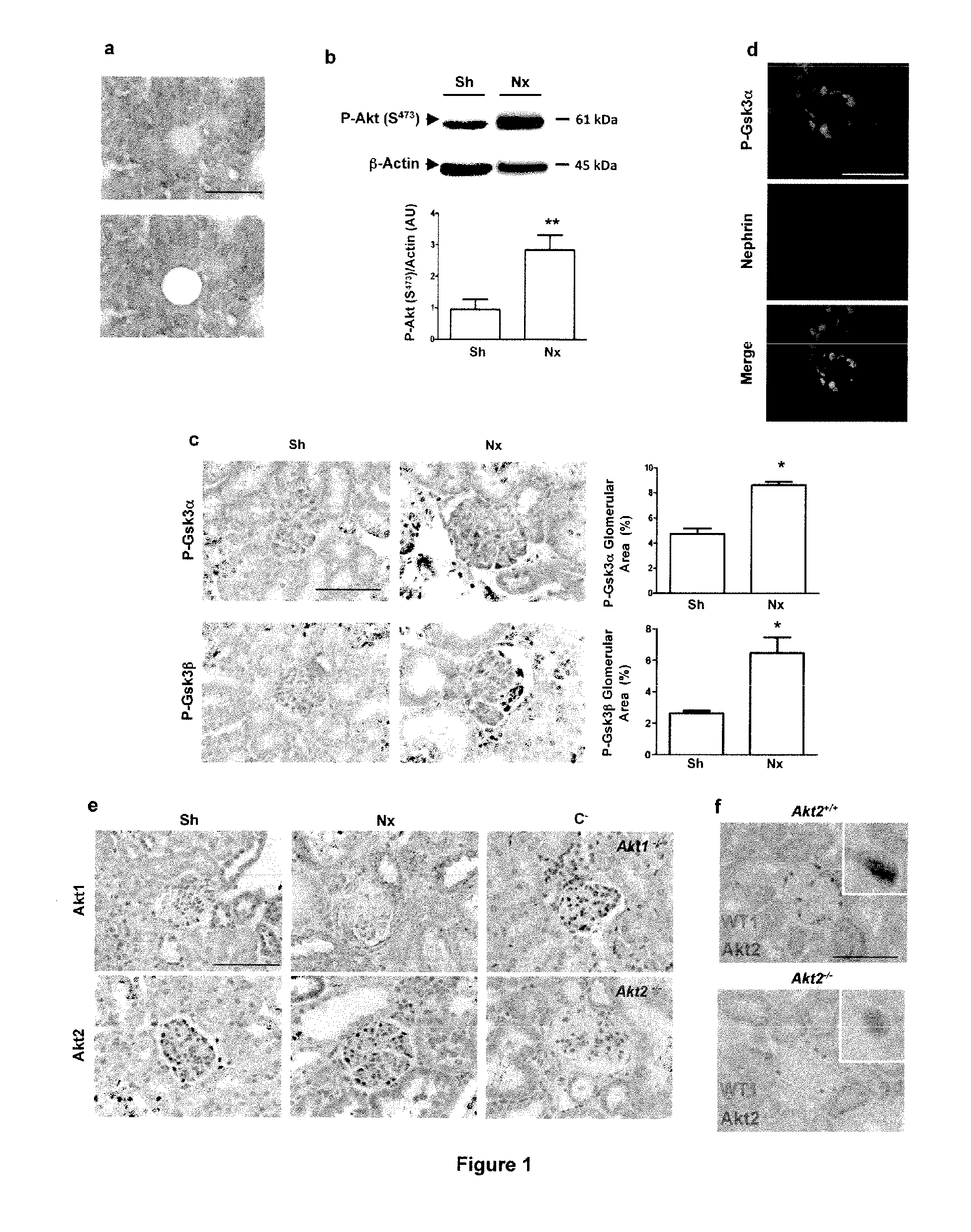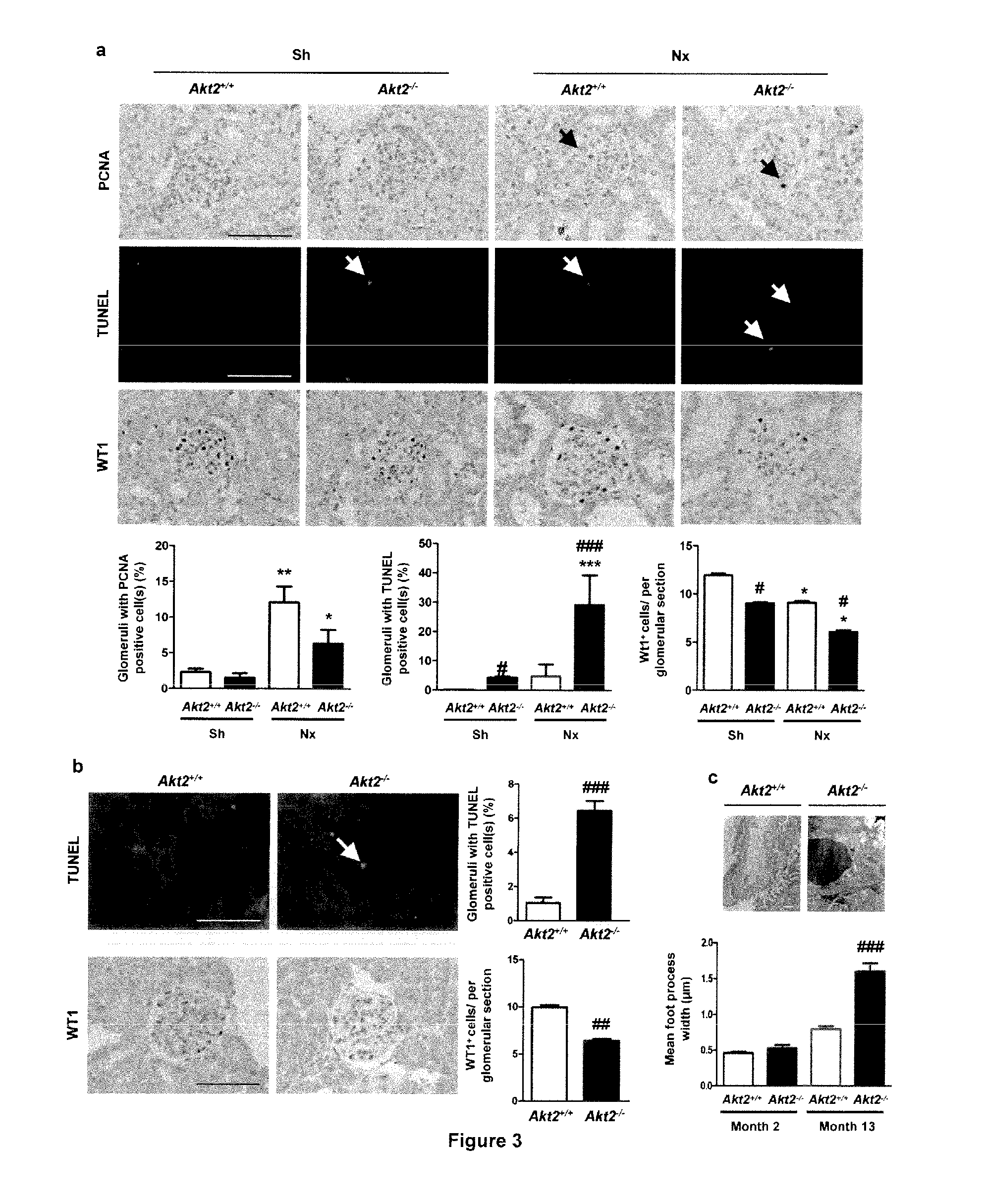Biomarkers of renal disorders
a biomarker and kidney disease technology, applied in the field of biomarkers of kidney disease, can solve the problems of nephron damage, further nephron loss, and end stage renal failuresup>5
- Summary
- Abstract
- Description
- Claims
- Application Information
AI Technical Summary
Benefits of technology
Problems solved by technology
Method used
Image
Examples
examples
[0112]In the following description, all molecular biology experiments for which no detailed protocol is given are performed according to standard protocol.
Methods
Animals
[0113]Mice used for these studies were FVB / N and C57BL / 6 (Charles River), Akt1− / − and Akt2− / − mice23,38. Akt1− / − and Akt2− / − mice were bred onto an FVB / N genetic background for at least 10 generations. Animals were fed ad libitum and housed at constant ambient temperature in a 12-hour light cycle. Animal procedures were approved by the Departmental Director of “Services Vétérinaires de la Préfecture de Police de Paris” and by the ethical committee of the Paris Descartes University.
[0114]Several groups of mice were investigated in complementary studies. For subototal nephrectomy studies, FVB / N Akt2− / − mice were subjected to 75% nephrectomy (Nx; n=6-10) or sham-operation (Controls; n=4-6), as previously described53. After surgery, mice were fed a defined diet containing 30% casein and 0.5% sodium. Mice were sacrificed ...
PUM
| Property | Measurement | Unit |
|---|---|---|
| dissociation constant KD | aaaaa | aaaaa |
| dissociation constant KD | aaaaa | aaaaa |
| dissociation constant KD | aaaaa | aaaaa |
Abstract
Description
Claims
Application Information
 Login to View More
Login to View More - R&D
- Intellectual Property
- Life Sciences
- Materials
- Tech Scout
- Unparalleled Data Quality
- Higher Quality Content
- 60% Fewer Hallucinations
Browse by: Latest US Patents, China's latest patents, Technical Efficacy Thesaurus, Application Domain, Technology Topic, Popular Technical Reports.
© 2025 PatSnap. All rights reserved.Legal|Privacy policy|Modern Slavery Act Transparency Statement|Sitemap|About US| Contact US: help@patsnap.com



